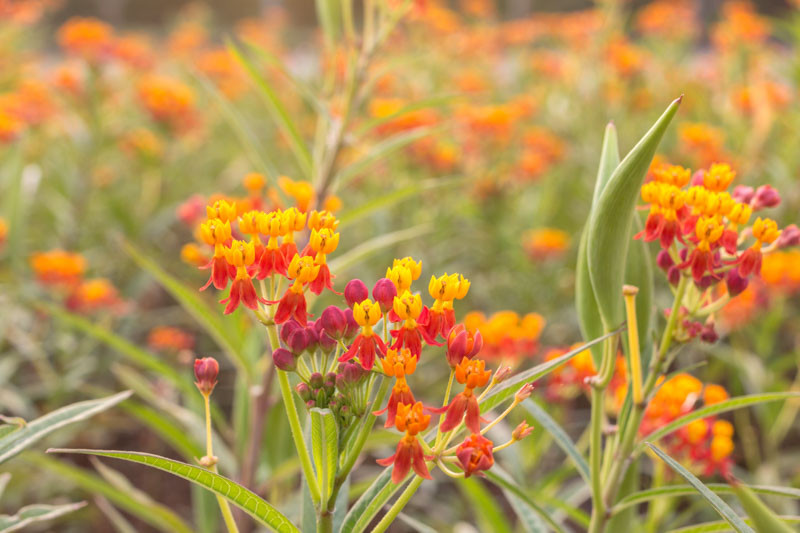Asclepias (Milkweed)
Asclepias, commonly known as milkweed, is a diverse genus of over 140 species of perennial flowering plants. Named for their milky sap, milkweed plants are native to North America, South America, and Africa. They are celebrated not just for their ornamental value in the garden but also for their environmental significance, serving as a critical host for the larval stage of Monarch butterflies.
- Habit: The growth habit of milkweed varies by species, but most typically feature upright stems that grow 2-6 feet (60-180 cm) tall, topped with clusters of intricately formed flowers.
- Hardiness: Depending on the species, milkweed is hardy from USDA zones 3-10.
- Flowers: They come in spherical clusters called umbels and display a range of colors, from the bright oranges and yellows of Butterfly Weed (Asclepias tuberosa) to the soft pinks of Common Milkweed (Asclepias syriaca) and the rich reds of Tropical Milkweed (Asclepias curassavica). The flowers produce a sweet nectar that attracts a variety of pollinators, and the plants are particularly known for their relationship with Monarch butterflies.
- Uses: Asclepias plays a pivotal role in wildlife gardens and pollinator gardens, given their capacity to attract a diverse array of beneficial insects. They’re also valued in native plantings and prairie-style landscapes. Despite the common name “weed,” many milkweeds are attractive and useful plants that have a place in cultivated gardens.
- Benefits: The ecological benefits of milkweed plants are significant. They serve as the primary host plants for Monarch butterflies, whose caterpillars feed exclusively on milkweed leaves. By planting milkweed, gardeners can support Monarch populations, which have declined due to habitat loss.
However, it’s worth noting that milkweed sap contains cardenolides, compounds that are toxic if ingested in large amounts. This toxicity can deter many potential predators, contributing to the survival of milkweed in the wild and making it a low-maintenance choice for the garden.

